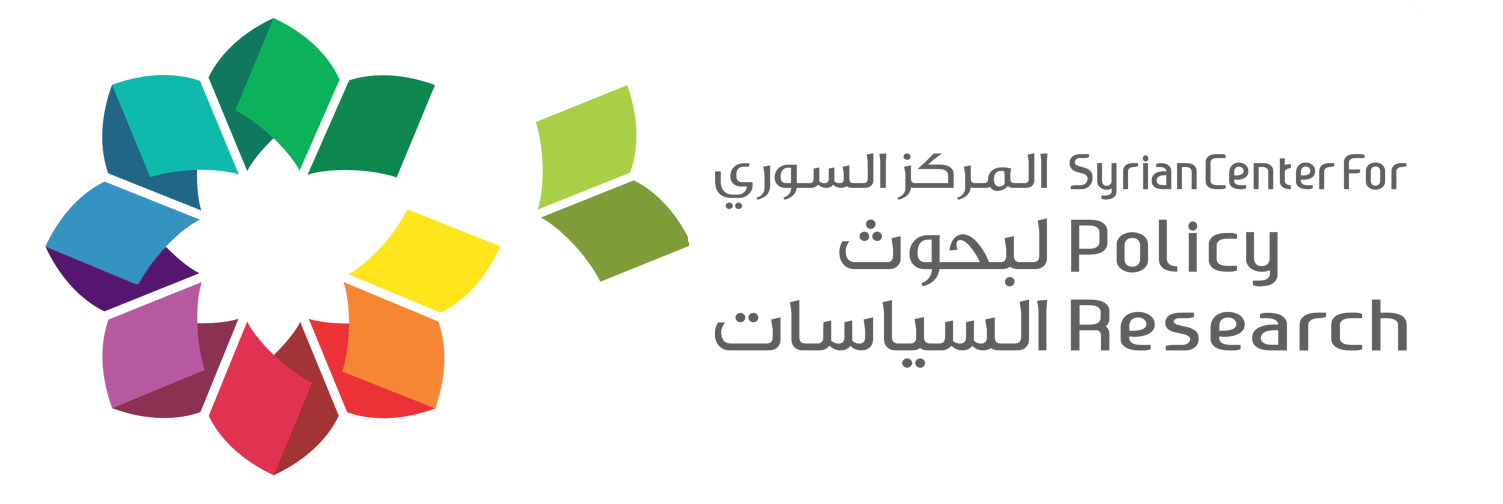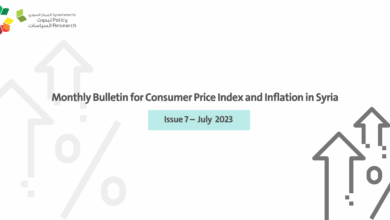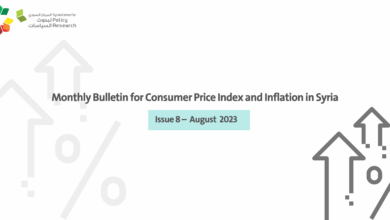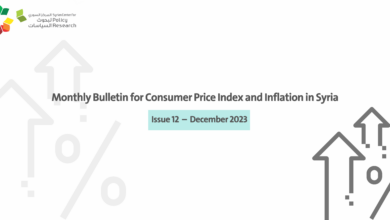Syrian Center for Policy Research:
The bulletin provides an independent assessment of consumer prices and the rate of inflation in all Syrian regions, based on a monthly survey of consumer prices carried out by the Syrian Center for Policy Research (SCPR) since October 2020. The SCPR had developed a methodology for building a price index based on components of consumer basket, weighting, and market selection (See SCPR’s Consumer Price Index in Syria)
This bulletin presents the findings of the monthly consumer price survey and the changes in the Consumer Price Index (CPI) for January 2023 (with 2021 as the base year) broken down by region and the major consumption groups. Based on the CPI changes, the bulletin provides an estimate of the cost of living and poverty lines at the local level in all Syrian regions.
The following results are highlighted:
- In January 2023, Syria reported an annual inflation rate (Y-o-Y) of roughly 89.7 per cent for consumer prices. Simultaneously, the monthly inflation rate (M-o-M) recorded a 7.6 per cent increase.
- The Syrian governorates of Damascus, Quneitra, Dar’a, Lattakia, Rural Damascus, and Tartous recorded the highest monthly inflation rates in January 2023. Leading the list was the Damascus Governorate, with a substantial monthly inflation rate of 16 per cent, primarily attributed to elevated rent and housing-related service costs at the outset of 2023. Following closely, Quneitra registered the second-highest monthly inflation rate for January 2023.
- The Food & non-Alcoholic Beverages group emerged as the leading contributor to monthly inflation (M-o-M) for January 2023 prices (standing at 7.6 per cent), accounting for 48.7 per cent of the total increase. It was succeeded by the Housing, Water, Electricity, Gas and other fuel oils group, responsible for 30.7 per cent of the increase.
- The upswing in monthly consumer price inflation in Syria during January 2023 translated into a rise in poverty lines across all governorates. Notably, the abject poverty line for families, serving as an indicator of food insecurity, reached SYP 1.04 million per month. The lower poverty line was assessed at SYP 1.64 million per month, while the upper poverty line stood at SYP 2.68 million per month.
- The wage gap from the upper poverty line reached 90 per cent for university-educated employees in the public sector, 56 per cent for private sector workers, and 55 per cent for civil society workers. In all three instances.
To read the bulletin in English:
Monthly Bulletin – Issue (1), 2023 (En)
To read the bulletin in Arabic:
Monthly Bulletin – Issue (1), 2023 (Ar)







